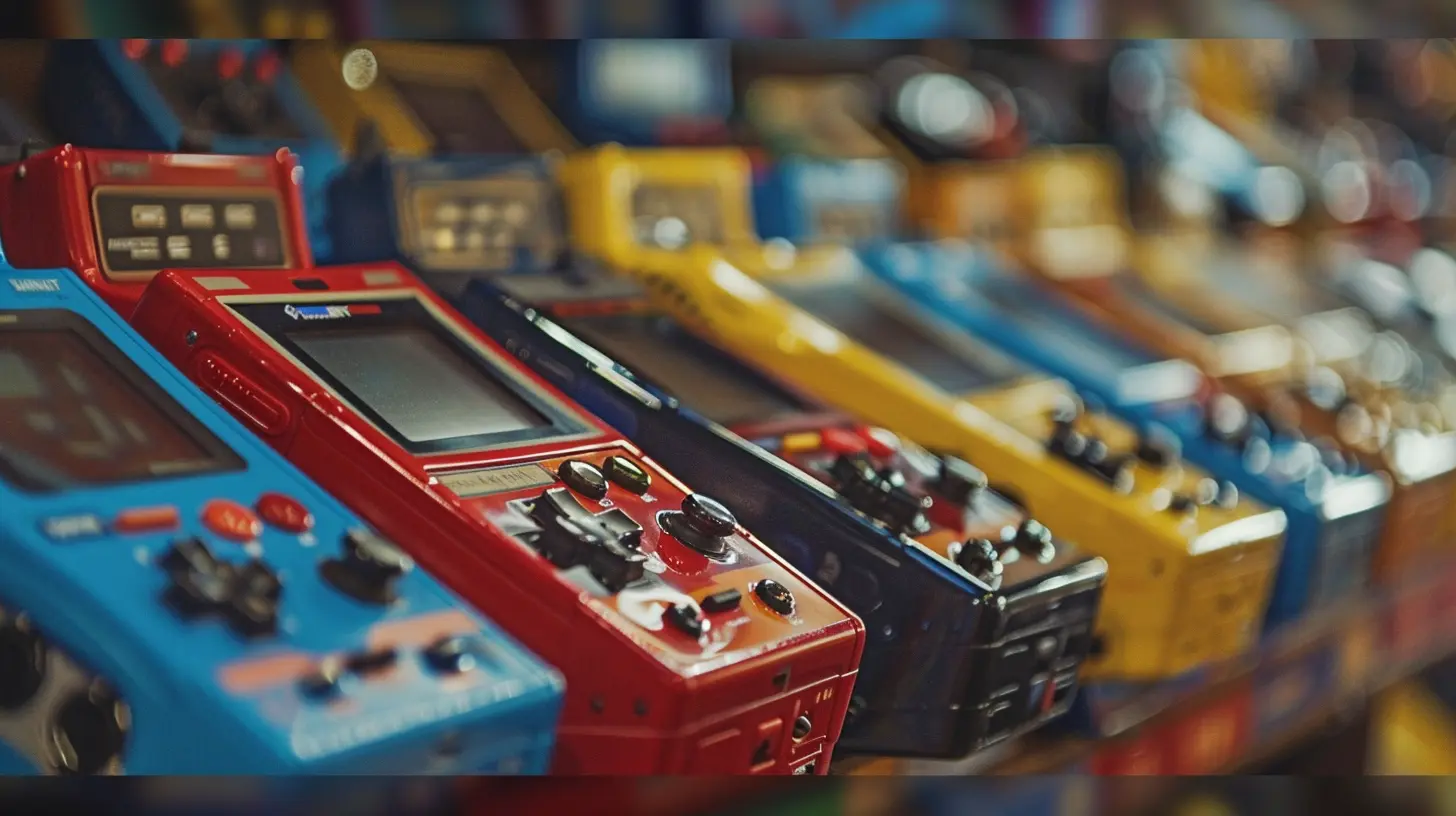Deciphering Tournament Jargon: Key Terms Every Competitor Should Know
16 June 2025
Let’s face it — jumping into the competitive gaming scene can feel like trying to decode an alien language. From "brackets" to "seeds," tournament jargon can get overwhelming quickly. Whether you're a casual gamer dipping your toes into competitive waters or a seasoned player looking to brush up on your knowledge, understanding these key terms is critical for success.
Don’t worry, though! I’ve got you covered. In this guide, we’ll break down the essential tournament lingo so you can walk into any competition (or chat room) with confidence. Grab a snack, sit back, and let’s untangle this web of game-speak together.
What’s the Deal with Tournament Jargon?
If gaming is its own culture, tournaments are like the high-pressure melting pot where that culture becomes a sport. With any sport, there's a unique language at play. Tournament jargon helps streamline communication between competitors, organizers, and fans. But if you’re new to the scene, it’s easy to feel like you’ve wandered into a conversation you weren’t invited to.That’s why it’s important to understand these terms. They’re not just random buzzwords; they’re the backbone of how tournaments work. Let’s dive into the key ones you need to know.
1. Brackets: The Blueprint of Every Tournament
Okay, let’s start with the big one: brackets. If tournaments were a house, brackets would be the floor plan. They’re the visual representation of how players or teams are paired up and how they progress through the competition.- Single Elimination Brackets: Lose once, and you’re out. It's the ultimate "do-or-die" format. Think of it as the gaming equivalent of a tightrope walk—one misstep, and you’re done.
- Double Elimination Brackets: This gives you a second chance. You’re placed in a "loser’s bracket" after your first loss, and you can fight your way back to the finals if you’re good (or lucky) enough.
Brackets are color-coded and organized for easy readability, but don’t be fooled—they can get intense. If you're not paying attention, you might miss critical matchups that could affect your position.
2. Seeding: Not About Gardening
If you’ve ever wondered why tournaments don’t just throw players in randomly, here’s your answer: seeding. It’s the process of ranking players before the tournament starts based on their skill or past performance. The goal? To make competition fair and balanced.For instance, in a seeded tournament, top players don’t face off in early rounds. It’s like giving a head start in a marathon to the ones with heavier shoes. You’ll often hear terms like "number one seed" or "low seed." Pro tip: if you’re a low seed, don’t count yourself out—upsets happen all the time!
3. Pools: The Preliminary Battles
Before brackets even come into play, some tournaments start with pools. Think of these as mini-tournaments designed to weed out the weaker players and create fairer brackets later on.Pools are often used in large-scale events with tons of participants. It’s kind of like auditions for a talent show—only the best move forward. Even if you don’t make it out of pools, consider it a valuable learning experience!
4. Match Types: The Variety Pack of Competitive Gaming
When it comes to matches, not all are created equal. Here are some common formats:- Best of One (Bo1): One game decides the winner. These are quick and brutal—like a fast-food meal when you’re starving. Perfect for early rounds.
- Best of Three (Bo3): First to win two games takes the match. This is the "goldilocks" of formats—balanced and fair.
- Best of Five (Bo5): First to win three games wins. This format is typically reserved for high-stakes matches, like semifinals or finals.
Understanding these is crucial because each format demands different strategies and endurance levels.
5. BYOC: Bring Your Own Controller (or Mouse)
Here’s a term you’ll run into a lot: BYOC. It stands for "Bring Your Own Controller" and highlights one of the quirks of competitive gaming. Unlike traditional sports, where the equipment is often standardized, gamers prefer their own setups.Why? Comfort, familiarity, and superstition, honestly. That old, beat-up controller with the peeling grip tape? It’s practically a lucky charm.
6. Sandbagging: When Players Hold Back on Purpose
Ah, the infamous sandbagging. This term refers to when a player intentionally underperforms to either manipulate rankings or lull opponents into a false sense of security. It’s like an actor rehearsing a scene and "forgetting" their lines just to throw people off. While it might sound cheeky, it’s generally frowned upon in professional gaming.7. Pop-Offs: The Celebration We All Love (or Hate)
What’s a tournament without a little drama? Pop-offs are those emotional outbursts players have after a big win. They’re raw, unfiltered, and sometimes controversial. Whether it’s jumping out of a chair, throwing a fist in the air, or shouting “Let’s go!” at the top of their lungs, pop-offs are a staple of the tournament scene.Love ‘em or hate ‘em, they’re here to stay. Just don’t overdo it, or you might find yourself on the receiving end of a meme.
8. Meta: The Ever-Shifting Landscape
In gaming, meta isn’t short for metaverse—it stands for "most effective tactics available." It’s the current trend in strategies, characters, or weapons that lead to the best results. Keeping up with the meta is like trying to follow the latest fashion trends—what’s hot today might be out tomorrow.Remember, though: playing the meta isn’t everything. Plenty of underdog players innovate and beat the meta with unconventional strategies.
9. Choke: The Pressure is Real
If you’ve ever missed a wide-open shot in basketball or stumbled over your words during a speech, you know what it means to choke. In tournaments, it’s when a player performs far below their usual skill level due to stress or pressure.Choking happens to the best of us. The key is to learn how to manage nerves and keep your cool under the spotlight.
10. GG: The Universal Code of Respect
Finally, let’s talk about GG, which stands for "good game." It’s the handshake of the digital world—a simple way to show sportsmanship. Whether you’ve been crushed or snagged a glorious win, typing "GG" in chat is a small yet meaningful gesture.Of course, there’s also BG ("bad game")—but we’re all about positivity here, right?
Wrapping It Up
There you have it—a rundown of the most common tournament jargon you’ll encounter on your competitive gaming journey. From brackets and seeds to pop-offs and GG’s, these terms are your gateway to understanding and thriving in the scene.The next time someone asks if you’re ready for pools or compliments your "high seed," you won’t just nod politely—you’ll know exactly what they’re talking about. So, go out there, compete fiercely, and maybe even pop-off a little (just don’t sandbag, okay?).
all images in this post were generated using AI tools
Category:
TournamentsAuthor:

Lucy Ross
Discussion
rate this article
3 comments
Calyx Hardy
Great article! Understanding tournament jargon is essential for any competitor. I'm eager to learn how these terms can enhance strategy and communication during competitions. What’s your favorite term?
June 20, 2025 at 4:26 AM

Lucy Ross
Thank you! One of my favorite terms is "meta," as it helps competitors understand the most effective strategies and approaches in the current competitive landscape. Happy learning!
Bradley Shaffer
Finally, a glossary for all us newbies!
June 19, 2025 at 4:16 PM

Lucy Ross
Thank you! I'm glad you found it helpful!
Zephyrwind Sawyer
This article is a fantastic resource for both newcomers and seasoned gamers! Understanding tournament jargon can significantly enhance your competitive experience. It's crucial to familiarize yourself with these terms to communicate effectively and strategize during events. Well done!
June 18, 2025 at 4:29 PM

Lucy Ross
Thank you for your kind words! I'm glad you found the article helpful for both new and experienced gamers. Understanding the jargon is indeed vital for effective communication and strategy in tournaments. Happy gaming!



